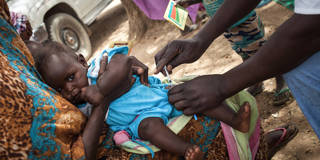Global immunization efforts have saved more than 150 million lives over the past half-century. On the 50th anniversary of the World Health Organization's Essential Programme on Immunization, it is worth celebrating these remarkable results and reflecting on what still needs to be done.
GENEVA– There is a good chance that you know one of the 154 million people who over the past 50 years have been saved from a preventable death by routine immunization. You might even be one. In fact, surveying the past half-century, it is hard to identify a public-health tool that has had a more positive impact than vaccination, or one that has done more to promote global health equity.
Routine immunization programs, once the purview of the wealthy world, now exist in every country, owing to the landmark commitment that the World Health Organization’s member states made in 1974 to establish what is now known as the Essential Programme on Immunization. Initially, the EPI focused on ensuring universal access to vaccines against tuberculosis, diphtheria, pertussis, tetanus, polio, and measles – all preventable child killers. Today, 84% of children globally are immunized against these six diseases, compared to only 5% in 1974.
But progress has been hard won. After rapid gains in immunization coverage throughout the 1980s, momentum was lost in the 1990s. The main issue was that lower-income countries lacked the resources and infrastructure needed to sustain immunization programs. Moreover, vaccine markets were fragmented and dysfunctional: countries depended on a few manufacturers, and uncertain demand deterred new entrants.

GENEVA– There is a good chance that you know one of the 154 million people who over the past 50 years have been saved from a preventable death by routine immunization. You might even be one. In fact, surveying the past half-century, it is hard to identify a public-health tool that has had a more positive impact than vaccination, or one that has done more to promote global health equity.
Routine immunization programs, once the purview of the wealthy world, now exist in every country, owing to the landmark commitment that the World Health Organization’s member states made in 1974 to establish what is now known as the Essential Programme on Immunization. Initially, the EPI focused on ensuring universal access to vaccines against tuberculosis, diphtheria, pertussis, tetanus, polio, and measles – all preventable child killers. Today, 84% of children globally are immunized against these six diseases, compared to only 5% in 1974.
But progress has been hard won. After rapid gains in immunization coverage throughout the 1980s, momentum was lost in the 1990s. The main issue was that lower-income countries lacked the resources and infrastructure needed to sustain immunization programs. Moreover, vaccine markets were fragmented and dysfunctional: countries depended on a few manufacturers, and uncertain demand deterred new entrants.